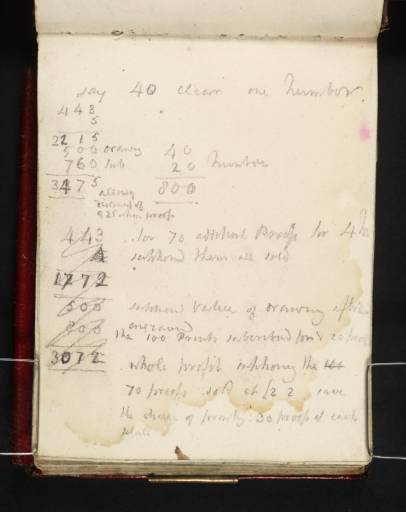References
How to cite
David Blayney Brown, ‘Costings for the ‘Liber Studiorum’ (Inscriptions by Turner) c.1809–14’, catalogue entry, May 2011, in David Blayney Brown (ed.), J.M.W. Turner: Sketchbooks, Drawings and Watercolours, Tate Research Publication, December 2012, https://www

